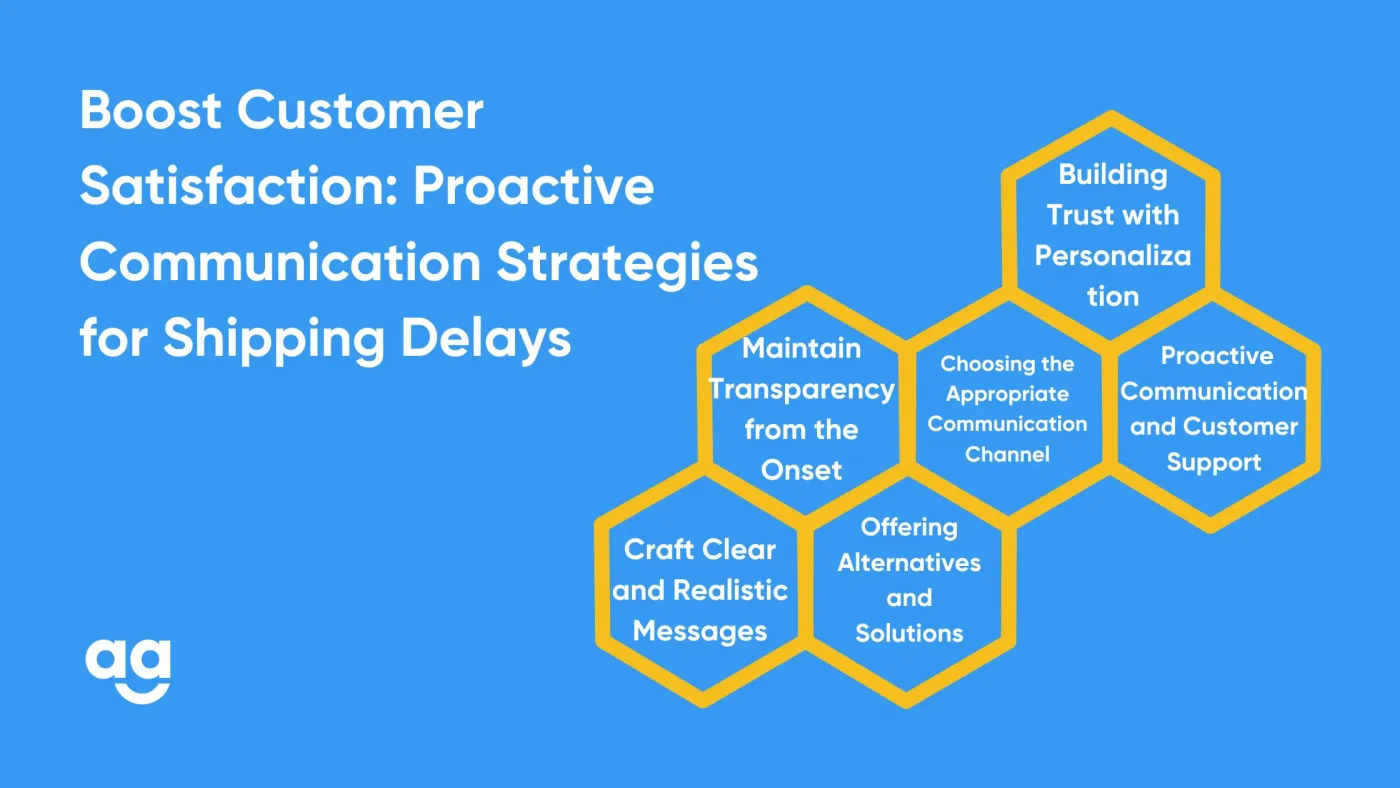Planning Pays Off: 5 Strategies to Get the Most Out of Your Delivery Speed Choice
October 15, 2024
5 min read
Introduction
Effective shipping communication, especially when handling shipment delays, is a key component of productive business relationships. On-time delivery and client satisfaction are related. Businesses can dramatically increase their success rates and profitability by prioritizing this area and improving there.
Delivery schedules can be thrown off, which could leave online buyers unhappy. These factors include bad weather, logistical difficulties, and customs laws.
Although inevitable in e-commerce, shipping delays cause problems surpassing simple inconveniences and affect consumer confidence and business image.
When alerting clients to delays, it is vital to go beyond simply conveying the negative news. This article offers helpful advice on effectively communicating delivery delays, with insightful explanations to help you along the way.

Communication Strategies for Shipping Delays
Sustaining open and transparent shipping communication with consumers is crucial to retaining their trust and happiness during delivery delays. While ensuring on-time delivery is a primary goal, effective communication strategies are paramount in mitigating the impact of delays and developing positive customer relationships.
Craft Clear and Realistic Messages
You may efficiently handle the delay and preserve client happiness by communicating understandably and compassionately. Do not use technical jargon while explaining the causes of delay.
Offer your heartfelt regrets for any trouble you may have caused and ensure clients that you will take quick action to address the matter. Provide a realistic timeframe for resolving the delay, avoiding overpromising and underdelivering to effectively manage expectations.
Maintain Transparency from the Onset
Even after order deadlines have passed, it is crucial to maintain open shipping communication with customers. If delivery delays are unavoidable, inform them upfront on your website homepage before completing their purchases.
Update your shipping policy to reflect current circumstances and provide estimated delivery timeframes for back-ordered products. Additionally, include a reminder about potential delays on your checkout page to manage customer expectations.
Choosing the Appropriate Communication Channel
The choice of communication channel is crucial when informing customers about delivery delays. Consider the situation’s urgency and your customers’ preferences to select the most effective method.
Email updates are ideal for providing detailed explanations and links to additional information. SMS Alerts can be suitable for immediate notifications, especially when delays are discovered close to the expected delivery date.
Website and Social Media Announcements are effective for delays affecting multiple orders or services. Carefully selecting the communication channel ensures your message reaches customers promptly and effectively.
Strategic shipping communication channel selection ensures your message reaches customers promptly and achieves maximum impact.
Building Trust with Personalization
Checking in with customers after a shipping delay can maintain trust and foster loyalty. A personalized email or message expressing gratitude for the client’s patience can reiterate your dedication to exceptional customer service.
Think about offering unique incentives like discounts or loyalty rewards to demonstrate your commitment to resolving the issue. A phone call can directly address concerns and offer reassurance for high-value clients or those experiencing meaningful delays.
Proactive Communication and Customer Support
It is essential to promptly notify customers of any anticipated shipping delays to mitigate customer frustration and maintain a positive relationship. Communicate the issue and its potential impact on delivery times to show their concerns are valued.
To avoid leaving customers in the dark, offer timely updates and implement a tracking solution that provides real-time visibility into shipment progress. Customers can track their orders independently via tracking portals and dedicated pages, building trust and reducing inquiries.
Offering Alternatives and Solutions
When faced with shipping delays, providing customers with alternative options demonstrates your commitment to their satisfaction. Consider providing options for compensation or assistance and choices such as expedited shipping, partial deliveries, or discounts on future purchases.
It empowers customers and reinstates your dedication to finding solutions. Additionally, ensure customers are aware of how to contact your customer support team for any further questions or concerns.
Conclusion
A professional yet empathetic approach to shipping communication signifies a deep understanding of customer concerns. Committing to customer-centric values nurtures loyalty, positive word-of-mouth, and long-term growth.
Delays may result in missed sales and customer acquisition opportunities. Reach your customers faster than ever with Shipyaari’s extensive network.
More than 30,000 businesses rely on it to provide dependable and effective same-day and next-day delivery options that exceed customers’ expectations.
Wait no longer to upgrade your shipping game with Shipyaari’s cutting-edge delivery services. Sign up now to enjoy faster delivery times and enhance customer satisfaction.
Frequently Asked Questions
The pointers that you should include are:
- A clear explanation of the delay and its causes.
- An estimated timeframe for resolution.
- A sincere apology and expression of empathy.
- Alternative options or solutions, if available.
- Contact information for further inquiries.
You must examine the logistics and supply chain procedures to find any possible bottlenecks. Simplifying your inventory control and order fulfillment procedures can guarantee smooth operations. Diversify your shipment choices to lessen dependency on a single carrier.
The common reasons are:
- Weather conditions
- Supply chain disruptions
- Customs delays
- Transportation issues
- Inventory shortages
The ways to measure effectiveness are:
- Track customer satisfaction metrics, such as net promoter score (NPS).
- Monitor social media sentiment and customer feedback.
- Analyzing customer inquiries and complaints can reveal areas for improvement.
Suggested Reads
Hyperlocal Personalization: Tailoring Experiences for Local Customers
Introduction The eCommerce industry in India has witnessed a rapid growth of hyperlocal services in
Continue ReadingDec
How Can Box Size and Sustainability Cut Waste in Hyperlocal Deliveries?
Introduction Sustainability is more than just a trendy word in today’s logistics industry; it’s a
Continue ReadingNov

















 Shipping
Shipping